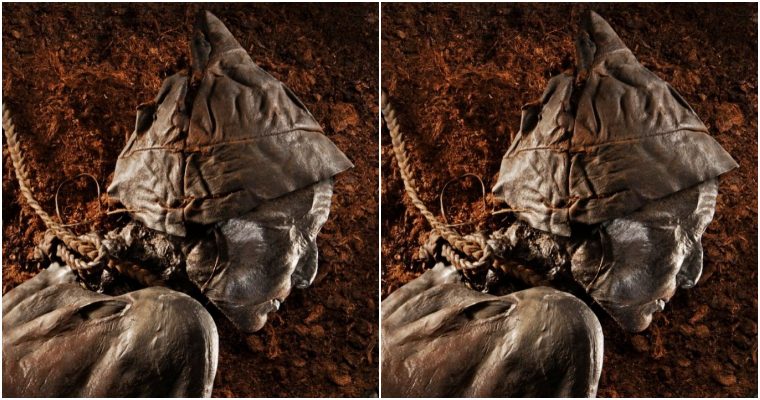El descubrimiento de un cráneo de dos millones de años en Sudáfrica está arrojando nueva e importante luz sobre la microevolución en una de las primeras especies de homínidos, como revelan Jesse Martin y Angeline Leece.

he DNH 155 Paranthropus robustus cranium was discovered at the site of Drimolen Main Quarry, in South Africa. [All images: Jesse Martin, Angeline Leece, and Andy Herries, unless otherwise stated] Discovered in the dark, damp sediments of Drimolen Cave, South Africa, the DNH 155 Paranthropus robustus cranium returned to the light in 2018 after two million years encased in rock. However, the fossil human’s journey through the ages had taken a toll, and hundreds of individual cranial fragments had to be excavated and reconstructed before it could be introduced to the world. Now the world’s oldest, best-preserved representative of Paranthropus robustus, the DNH 155 cranium, is helping scientists to shed new light on the human evolutionary story.

The DNH 155 cranium was highly fragmented when it was found, and had to be carefully excavated and reconstructed before further analysis could be carried out. Paranthropus robustus is a relatively small-brained species of hominin that lived in South Africa between c.2 and 1.04 million years ago. First described by Robert Broom in 1938, the species is considered a cousin of Homo sapiens rather than a direct ancestor. Indeed, around two million years ago Paranthropus robustus appears on the landscape at roughly the same time as our direct ancestor, Homo erectus. These two vastly different species – Homo erectus with their relatively large brains and small teeth, and Paranthropus robustus with their relatively large teeth and small brains– represent divergent evolutionary experiments. While scientists have long understood that Homo erectus continued to evolve and adapt over large stretches of time and space, we have until now lacked evidence of change within Paranthropus robustus, which ultimately went extinct without leaving descendants some time between 1.4 and 1.0 million years ago.
However, the discovery of the DNH 155 Paranthropus robustus cranium in Drimolen Main Quarry, combined with highly precise dating evidence, fundamentally changes our understanding of this early human species. DNH 155 shares distinct morphological similarities with a female specimen also from Drimolen called DNH 7, rather than with other presumed males from the nearby sites of Swartkrans and Kromdraai. In fact, the two Drimolen fossils, DNH 7 and DNH 155, are so similar that they probably represent a discrete morphological population distinct from other Paranthropus robustus populations and all other human ancestors. Recent dating work has demonstrated that the Drimolen Main Quarry fossil deposits probably pre-date the relevant ones from Swartkrans Member 1 Hanging Remnant and Kromdraai by as much as 200,000 years.
 The Paranthropus robustus specimens found at the site of Drimolen Main Quarry are believed to represent a population that differs significantly from specimens found at other sites. Microevolutionary changes
The Paranthropus robustus specimens found at the site of Drimolen Main Quarry are believed to represent a population that differs significantly from specimens found at other sites. Microevolutionary changes
The combination of the dating and morphological evidence suggests that the differences between the Drimolen and Swartkrans and Kromdraai populations represent the Paranthropus robustus lineage evolving through time. These changes took place during a time when South Africa was drying out, leading to the extinction of several contemporaneous mammal species. It is likely that climate change produced environmental stressors that drove evolution within Paranthropus robustus. In particular, the species evolved to generate and withstand high forces produced during biting and chewing. Thus, it is probable that the species adapted to eat foods that were hard or tough or otherwise mechanically challenging to process with their jaws and teeth. In some ways this is not surprising, because we have known since Darwin that species evolve in response to natural selection that may be a consequence of climate change. However, the DNH 155 cranium provides the first highly resolved evidence for small-scale, microevolutionary change in a human species over a relatively short timescale and in a restricted geographic area.
 The DNH 155 cranium provides clear evidence that microevolutionary change occurred within Paranthropus robustus over a short period of time.
The DNH 155 cranium provides clear evidence that microevolutionary change occurred within Paranthropus robustus over a short period of time.
The discovery of DNH 155 represents an important step in the ability of palaeoanthropologists to understand human evolution. [Image: Giovanni Boschian] As more and more fossil human ancestors are discovered, the ‘gaps’ in the fossil record, and so too our knowledge of the human evolutionary story, are closing. By the logic employed by many palaeoanthropologists, the Drimolen fossils could be designated their own species because they are morphologically distinct from all other fossils, but this ignores the core prediction of evolutionary theory: that change can occur within species. The DNH 155 cranium shows us that we are approaching a new era in palaeoanthropology where improvements in dating evidence, combined with the discovery of new fossils, allow us actively to ‘see’ relatively small-scale evolutionary change in demonstrably singular lineages. The DNH 155 and DNH 7 fossils do not represent a new species (as might be true of other newly discovered hominin fossils from South Africa) but rather an early, morphologically distinct population of Paranthropus robustus situated at a temporally distinct waypoint along a much longer evolutionary journey.
Source: 2st.qirdar.com








